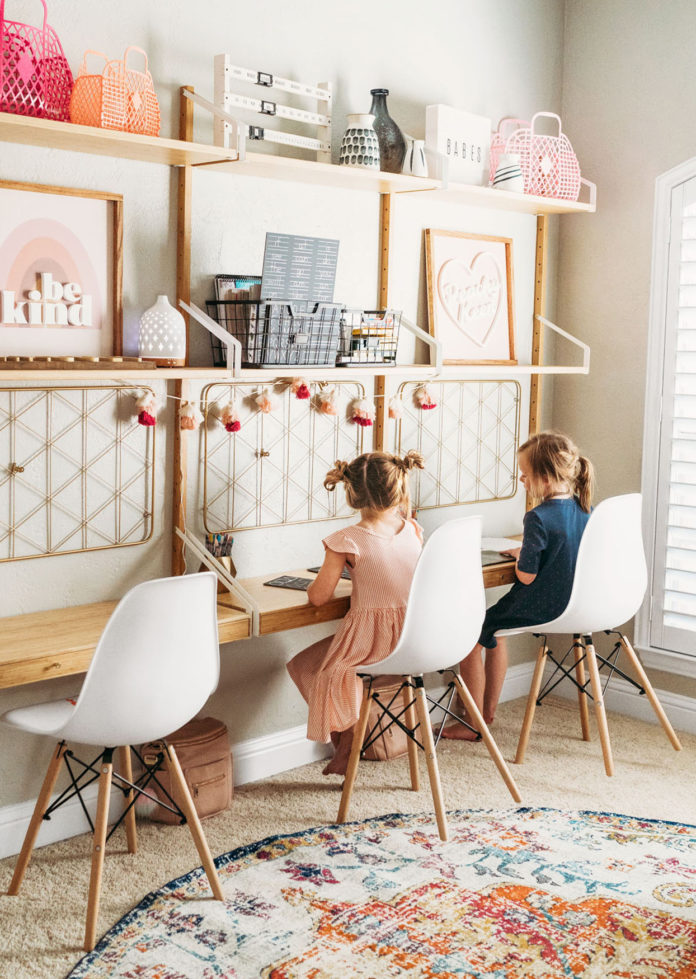It’s still summer, yes. But now is prime time to slowly start to plan for what may be the most important back-to-school season your kid will ever face. While you may not know what the exact situation will be in terms of schools reopening in your state, you can rest assured there will be some level of distance learning in play.
The best way to prep for it? Upgrade your home-learning environment. We talked with experts to get their best tips for creating a comfortable, functional workstation for your child.

Line them up.
With a free wall and mounted shelves, you can organize a single homework zone that does the job for several kids. Give each child a designated shelf so there’s no confusion about which items belong to whom.
Set up shop.
Empower your child by giving him a say, says Karen Aronian, Ed.D., of Aronian Educational Design LLC, a firm that designs learning spaces. While some more-distractible kids may prefer a desk in their room, most preschoolers and elementary-age children want to be where the action is, Aronian says. Bonus: They’ll be closer to you, so you can field questions and help them stay on task. Consider converting a little-used dining room into a learning area. “Having a separate space helps kids get into a different mindset so they can show up ready to focus,” says Julie Morgenstern, a professional organizer and author of Time to Parent. Don’t have a spare room? Not a problem, experts say. Add a small table in the family room, designate a corner of the kitchen, or repurpose a nook under the stairs.
Sort it out.
We all know how quickly any kids’ area can get lost under worksheets, arts and crafts, or tubs of slime. But the more cluttered the desktop, the harder it will be for your child to focus. Store papers and art supplies in bins in a nearby cabinet or on a shelf. Use labels or clear containers so kids can keep up the sorting system. Let them grab high-use items like pencils from a desktop organizer or buckets hanging from a rail above the desk. “They don’t want to take off a lid or open a drawer,” says Kathy Jenkins, owner of the company Come to Order and a Certified Professional Organizer who helps prep homes and students. A corkboard provides a place for reminders and a calendar.
Size accordingly.
Your child may seem comfy sprawled on his bed, but an ergonomic setup is crucial for posture to instill good habits and to support writing skills, says Sari Ockner, a pediatric occupational therapist in Los Angeles. “If he doesn’t have proper body position when he’s writing, he has to work harder, and it’s more likely you’re going to see messy handwriting.” When your child is sitting, his desk should be at or slightly below resting elbow height, says Ola Sinelnikova, an ergonomist and kinesiologist for Humanscale, an ergonomic office furniture company. His feet should be firmly planted on the floor. Adjustable or kid-size tables and chairs are great, but you can hack adult ones, Sinelnikova says. First, place a pillow on the seat of the chair and another one behind his back to push him forward until his knees extend about 2 inches in front of the chair. Then set a box on the floor to support his feet so that his thighs are almost parallel to the ground.
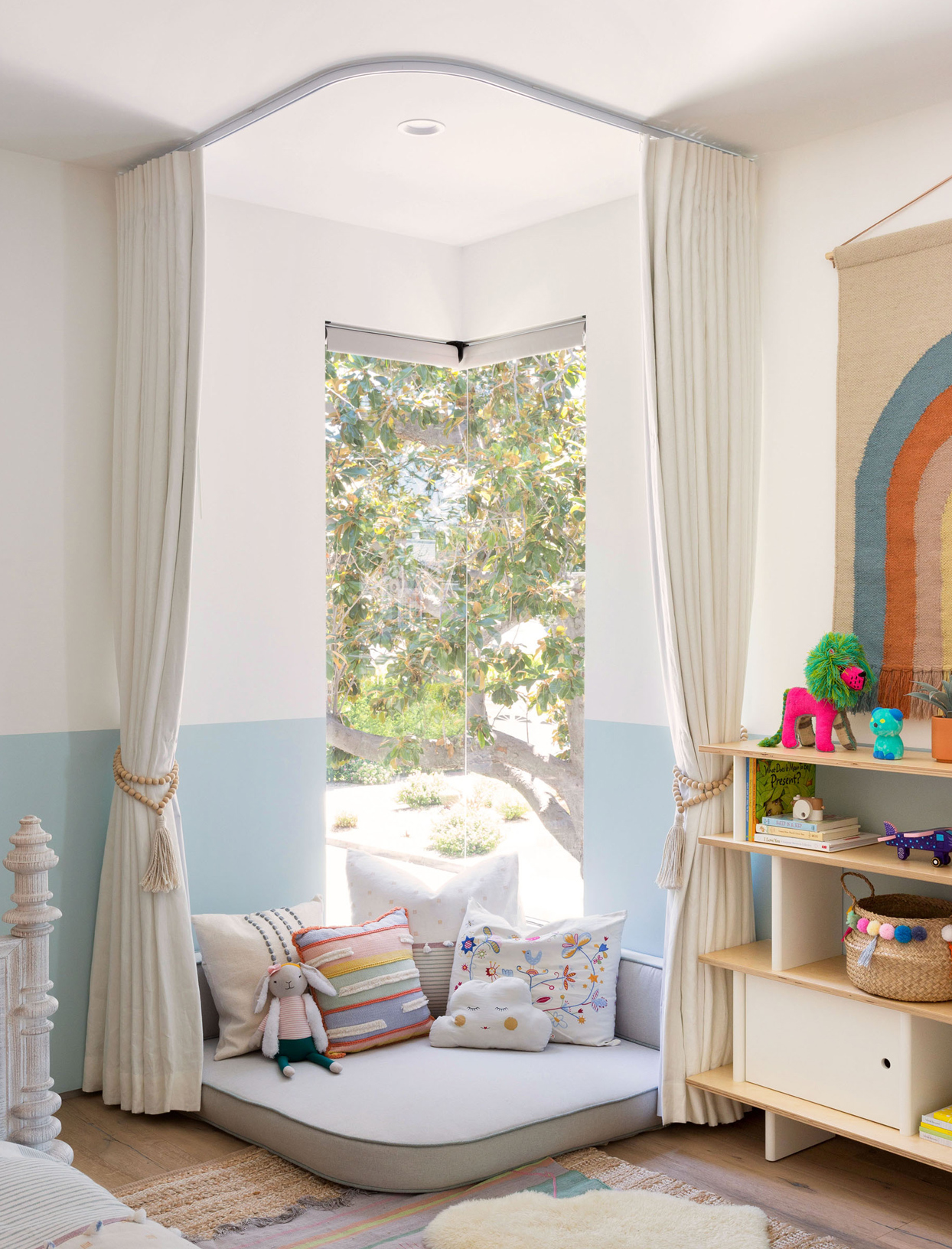
Transform a corner.
You don’t need a killer view and elegant drapes to pull it off, either. Just fluff up some floor pillows to make it comfy enough to curl up with an iPad or book. If there’s no natural light from a window, add a sconce or even a stick-on, battery-powered tap light.
Block distractions.
Your house is full of them, starting with your student’s little sister. If siblings are having trouble sharing a space, separate their desks with a tall bookshelf. If they’re seated at the same table, prop up trifold boards, tabletop screens you can buy or DIY out of a cardboard box. If the sibling is a wandering toddler, it may be best to keep her behind a baby gate. As for a big bro’s ear-crushing Minecraft playing, a white-noise machine or a fan will drown out background sound. Noise-canceling headphones are effective, especially since some kids enjoy studying to music, Aronian says. Stick to instrumental because research shows that songs with lyrics negatively affect concentration. For a child with attention difficulties, orient her workspace so that she faces a wall rather than into a room or out a window. Ockner recommends having your child sit on an inflatable wiggle seat or an exercise ball if she has trouble staying still and focused.
Another expert idea to steal: Fill a bowl with fidget toys your child can grab when he’s feeling restless. Add things like a smooth stone, gummy erasers, a stress ball, or a few LEGO pieces.
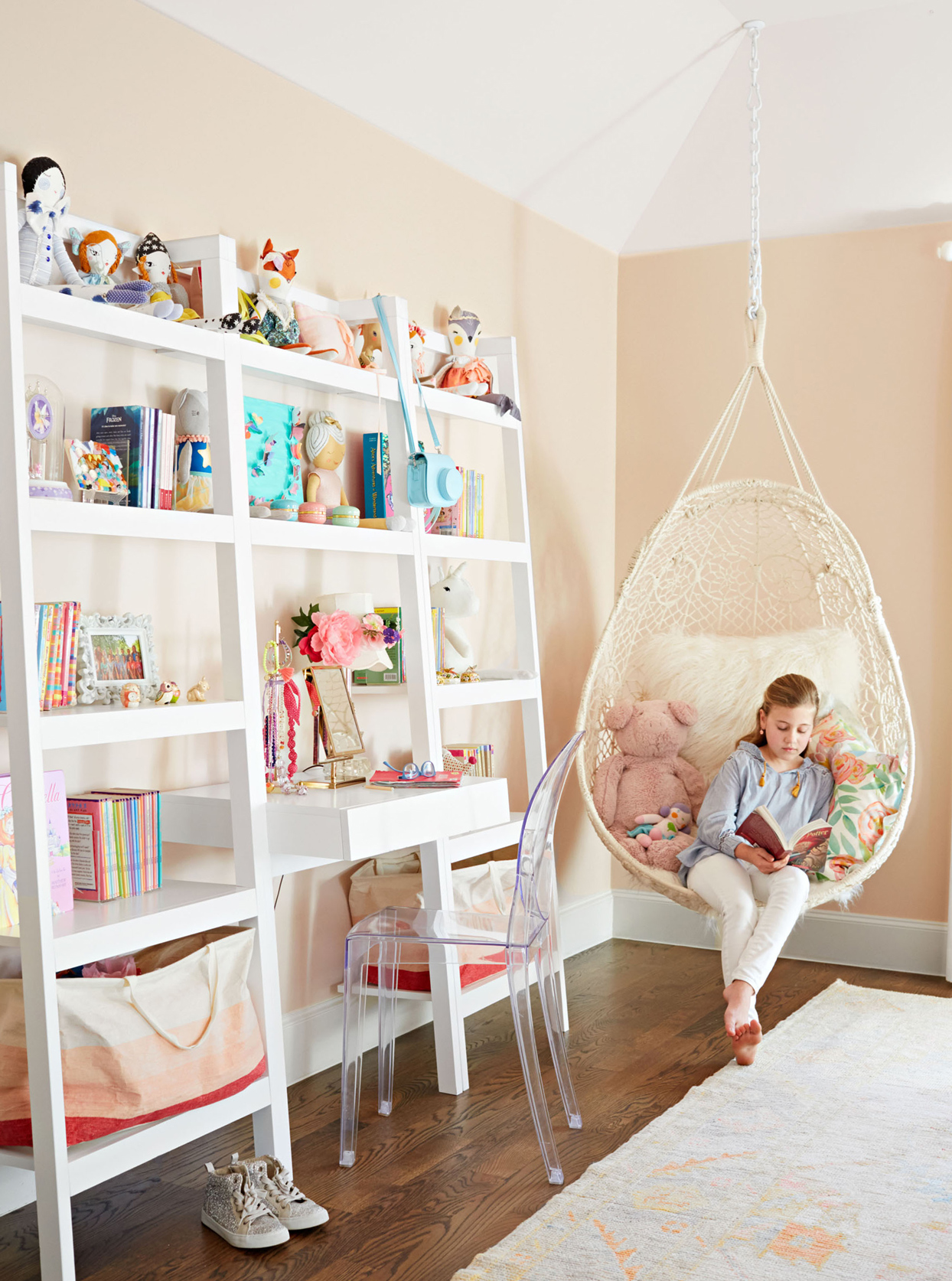
Opt for a minimal footprint.
Space-saving furniture, such as a leaning desk or shelves, means you have more options for squeezing in your study spot. Plus, it’ll give you extra room for a seriously cool chair—perfect for lounging while catching up on nightly reading.
Max what you’ve got.
Live in tight quarters? A side table in a hallway can make a nice little desk. Wall-mounted desks save space. Even the floor (with a wall acting as back support) is an option, Aronian says. Use a tray table with legs to give your child a writing surface. (Ergonomics experts say the floor is actually a better option than the couch!) If your kitchen table or counter will be pulling double duty, pack a caddy or a rolling cart with supplies and store it in a kitchen cabinet.
Consider multiple work zones.
Many experts recommend having different spots for learning in your home— a desk for focused work, the dining table for projects, and a quiet nook for reading. Like adults, kids fare better if they take breaks, switch positions, and have a change of scenery now and then. Studies show that learning in various locations enhances a student’s ability to take in and remember information. “Bodies shouldn’t be static,” Aronian says. “Kids can learn anywhere.”
Another expert idea to steal: Add a task lamp with an LED bulb to reduce eyestrain. Place it on the opposite side of your child’s dominant hand. (If he’s a righty, the lamp goes on the left side.)
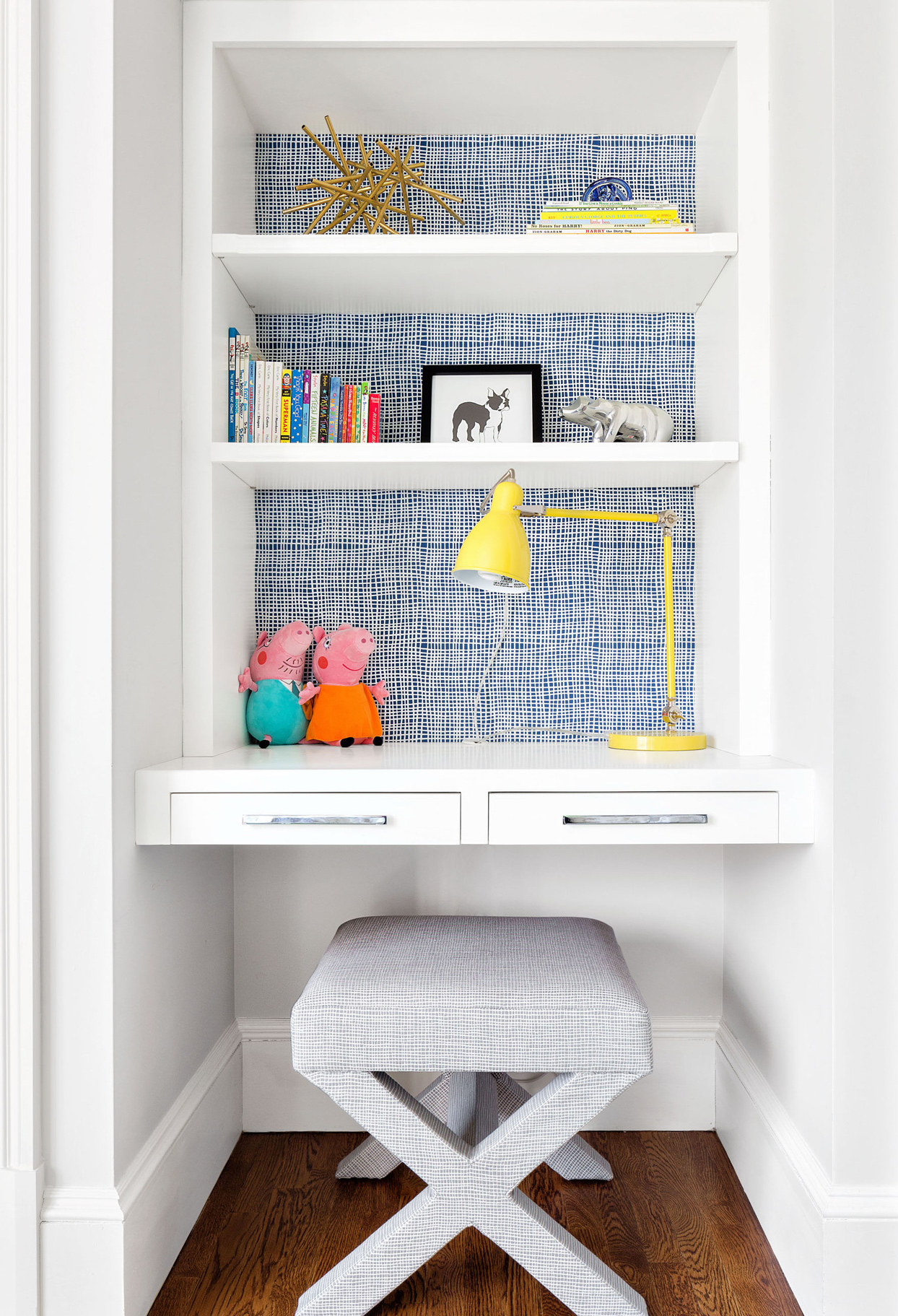
Hack out a nook.
Turn an awkward alcove or even a little-used closet into a homework hideout. “Take those winter coats out of the closet, put them in a clear box under the bed, add a little desk, and—whammo!—you have a great study spot,” Aronian says. Another option is to mount a few floating shelves: one as a work surface and the others for storage.
Another expert idea to steal: Is your kid using a laptop for a Zoom meeting? Place it on a stack of books. “If the laptop monitor is positioned too low relative to his seated eye, your child will end up hunched over,” Sinelnikova says. “Over time, that can strain neck muscles.”
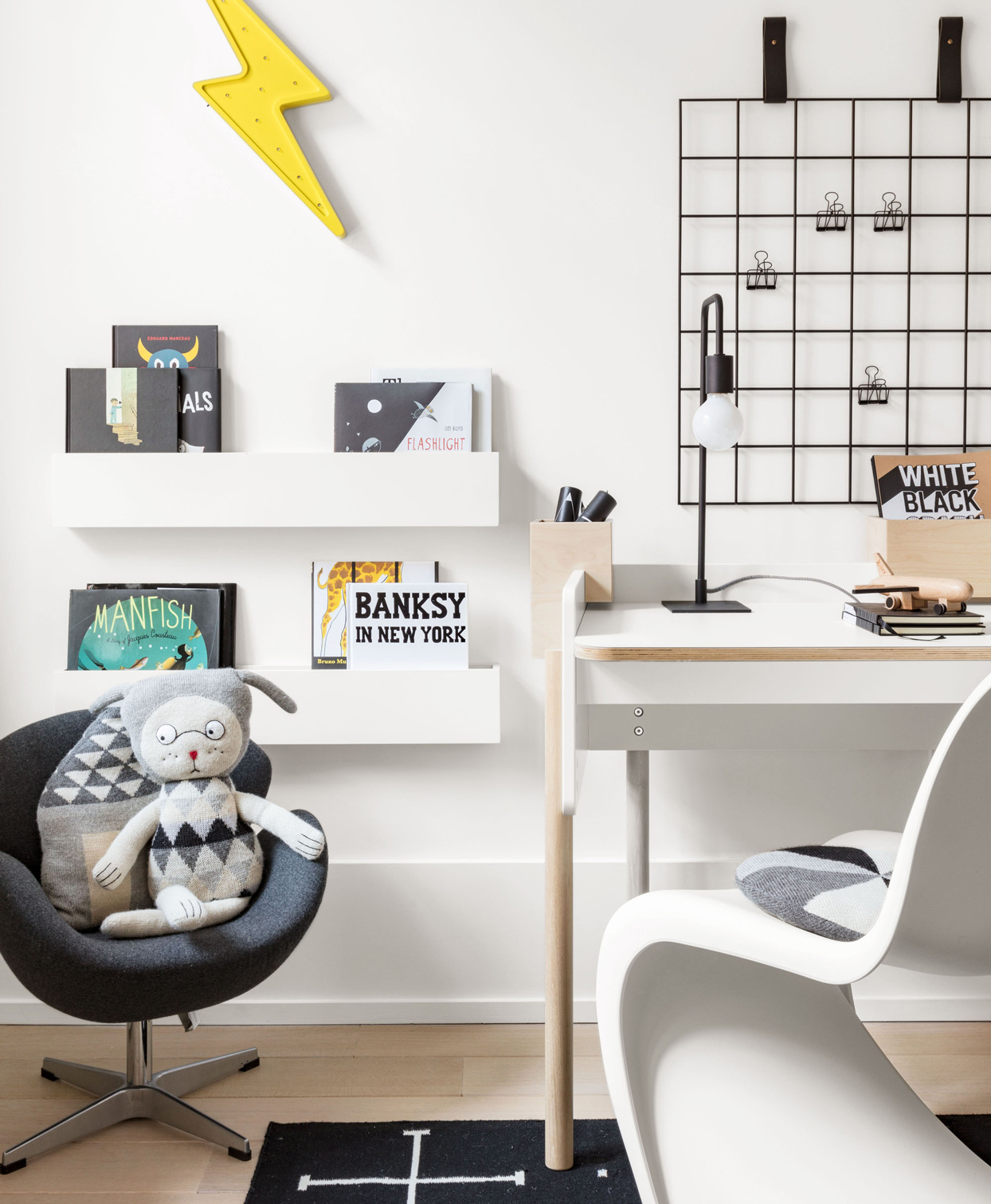
Amp up storage.
If desktop space is limited, go vertical. Install a floating shelf, a rail, or a trendy pegboard next to or above the desk, recommends Jenkins. This keeps everything visible while freeing the work surface from clutter.
This article originally appeared in Parents magazine's August 2020 issue as “An A Schoolwork Spot.” Want more from the magazine? Sign up for a monthly print subscription here
Parents Magazine






